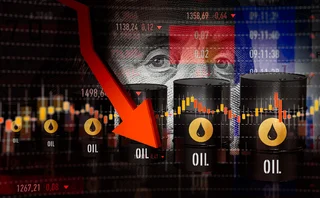Oil reaches new record as gas continues to rise
West Texas Intermediate (WTI) for April delivery gained $2.95 to end at $102.59/barrel on the Nymex, a record closing price for a front-month contract. The previous record, $100.88/bbl, was reached two days ago.
ICE Brent North Sea crude for April moved up by $2.63 to settle at an all-time high of $100.90/bbl after striking an intraday record of $101.27/bbl.
Analysts note that the price surge is being aided by a falling US dollar, inviting speculators in to the oil and gold markets to hedge against inflation as the Federal Reserve continues to slash interest rates in a bid to spur the economy.
Yet despite the Fed’s actions, further evidence that US growth is slowing was detailed in a report by the US commerce department, which said the US economy expanded at a slow 0.6% annual pace in the fourth quarter.
Contrary to the theory that economic pain might dent oil demand in the United States, the speed of the dollar’s decline and geopolitical fears over militant activity in Nigeria is keeping oil prices up, despite the fact that a series of larger-than-normal inventory builds have now taken US stocks to some 8mb above the five-year average in the United States.
“Continued low refinery utilization rates alongside fairly sustained import flows have allowed inventories to increase towards a more comfortable position,” according to Barclays Capital.
Such price action illustrates “how difficult it will be in disabusing the bullish bias in the market,” said MF Global’s Mike Fitzpatrick in a research note. “A technical correction in crude oil could be limited by the dollar's entrenched downtrend attracting more speculative buyers to the crude oil market.”
Meanwhile natural gas advanced on the last trading day for the March futures contract after a government report showed supplies fell more than average, signaling inventories may end the cold-weather demand season at the lowest since March 2005. Gas prices have risen by 26% this year.
Stockpiles declined 151 billion cubic feet to 1.619 trillion cubic feet for the week ended Feb. 22, a U.S. Energy Department report showed. The average change for this time of year is a decline of 141 billion cubic feet, according to department data.
Gas for April delivery rose 4.2% to settle at $9.44 per million British thermal units (Btu) on Nymex.
More on Oil & refined products
Energy Risk Europe Leaders’ Network: geopolitical risk
Energy Risk’s European Leaders’ Network had its first meeting in November to discuss the risks posed to energy firms by recent geopolitical developments
US shutdown leaves commodity traders without key data
Commodity traders are ‘flying blind’ without Commitment of Traders reports
Energy Risk at 30: Learning from the past
Energy Risk looks back at the seminal events and developments that have shaped today’s energy markets
Why Iran tensions failed to rattle markets
Despite initial fears, traders say risks were signposted and investors had deleveraged after April
Oil and products house of the year: Macquarie Group
Energy Risk Awards: Bank pioneers innovative deals in illiquid markets, taking on esoteric risk
Podcast: should negative oil prices be allowed?
Did negative oil prices signify the market was operating effectively, or that something was wrong?
Podcast: the future of retail investment in oil
Will negative prices and big losses curb retail investors’ appetite for oil futures over the longer term?
Podcast: Kaminski and Ronn on negative oil and options pricing
The market is gravitating to the Bachelier model as an alternative to Black 76







